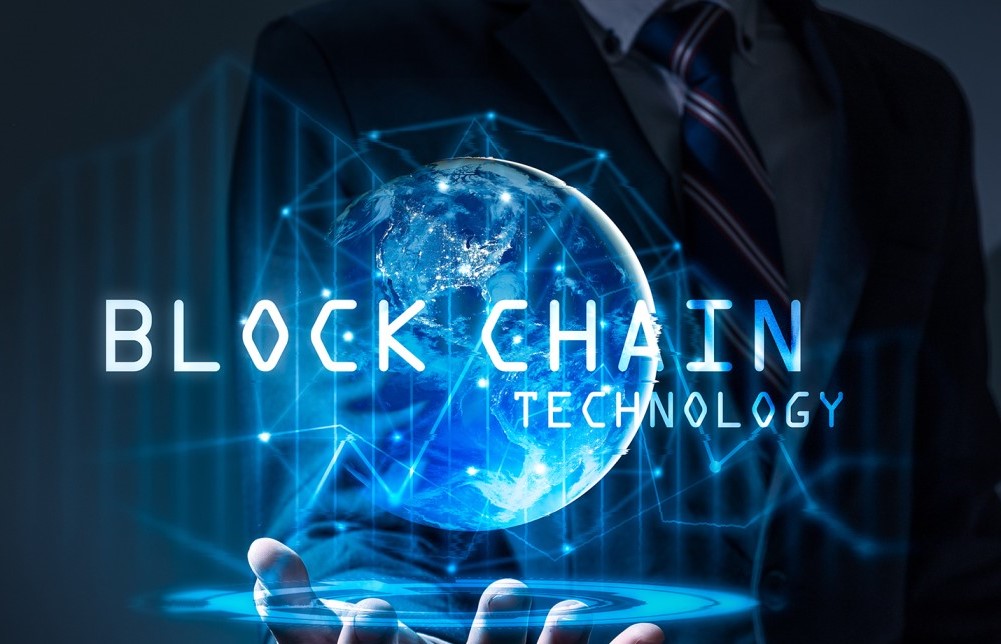The majority of us have used the phrase “Blockchain is the future.”
The fact that blockchain technology is already here and revolutionizing nearly every sector adds to the intrigue of this comment. It is now reshaping paradigms in government, agriculture, the environment, healthcare, education, and a variety of other sectors.
With the growing popularity of blockchain, everyone has begun to see the technology’s potential. Initially, blockchain technology disrupted the banking market. But its applications are research in a variety of fields, including software production.
As companies have begun to investigate the potential of blockchain by developing blockchain platform, the need for a blockchain development platform has skyrocketed. Another explanation why the number of blockchain networks is growing every day is the rise of dApp production.
What is blockchain technology?
Blockchain technology is a network of peer-to-peer nodes that stores transactional records. Also known as blocks, of the public in many databases, also known as the “chain”. This form of storage is generally refer to as a “digital ledger.”
Any transaction in this ledger is sign with the owner’s digital signature. Which verifies the transaction and protects it from tampering. As a result, the data in the digital ledger is extremely stable.
In simple terms, a blockchain is a digital distribute ledge. That is manage by a network of multiple computing machines in its most basic form. It holds data in the form of cryptographically protect and immutable blocks.
Why do we need the fastest blockchain?
Blockchain is a database of transactions, so it isn’t limited to digital money. Any value (data) transfer is register. And this opens up a lot of new possibilities, particularly if we lower the speed and scalability barriers.
We might get a transparent track of behavior in IoT if this problem is solve. This case, on the other hand, requires thousands of computers to operate as a single network, continuously sharing data. In this still-uncharted territory, blockchain will guarantee protection. But if it slows down the network, consumers would be able to trade safety for a better user interface.
As much as distribute ledger systems can do, we must keep in mind that as long as they are considerably slower than centralized databases, few customers would be able to forget their user experience in exchange for greater transparency and security.
There’s also statistical evidence to support it. The user interface is determine by human perceptual skills, according to a 1993 report by Nielsen Norman Group on application reaction times:
- The 0.1 second reaction time limit gives the customer the impression that the device is responding instantly.
- While the user can note the delay, the 1-second response cap keeps the user’s flow of thought uninterrupted.
- The attention span of a user is limit to ten seconds. After this, the user will choose to do other things while waiting for the machine to complete the action.
That is why, to get the best experience using digital assets and developing decentralize technologies, we must compete for the lowest latency, not just the highest number of transactions per second.
The scalability of a ledger is determined by the number of transactions it can handle. It means that the network will handle X transactions in one second, but it’s also necessary to remember what’s unique about those transactions. It’s simple for them to hit high TPS if they’re tiny and don’t need some form of signature or authentication, but they’ll also have poor protection and only a few possible applications.
That is why to label blockchain technology as “fast,” we must first discuss actual transaction times. You want the exchange to happen in a fraction of a second from the user’s viewpoint. And you do want it, no matter how much traffic is already on the network.
As a result, as a customer, you want the lowest latency or verification period as well as the highest TPS number. This is what you would call ‘fast.’ It’s not just about the number of transactions per second.
What Is the Fastest Blockchain?
The blockchain is the fastest? We looked around the internet to see which blockchain projects accomplish the highest real-time transaction speed and scalability.
Futurepia
Futurepia is a blockchain-based, open social media Mainnet. It is built on DDPoS (Double Delegated Proof of Stake), a modern consensus algorithm that solves the problem of the current DPoS (Delegated Proof of Stake) process, also known as 3rd generation blockchain technology.
In DDPoS, the master node (BP) and the Futurepia node (BO) become representative nodes in random order as Block is generated in each round. As a result, the probability of master node conspiracy decreases, and processing speed increases.
EOS
EOS, which was launched in June 2018, is currently the most popular mainnet due to its speed. When EOS was first released, it was dubbed the “Ethereum Killer,” and when it reached 3,000 TPS, it made headlines when it set two major records:
- Being the fastest blockchain, and b) being the fastest cryptocurrency.
- This is the first time a cryptocurrency has ever surpassed the Visa TPS speed (which averages 1700 at that time)
EOS, like Futurepia, is a forum for decentralized apps (DApps), through which developers create blockchain-based decentralized apps using EOS’s underlying architecture. They now appear to have achieved a speed of 50,000 TPS.
Ripple
Ripple is a blockchain that is both fast and stable. On average, it provides 1,700 TPS. Ripples’ processing speed may be the cornerstone to its success as a peer-to-peer payment network provider in the future.
NEO
NEO is a new blockchain that claims to have a speed of 1000–10,000 TPS. They, like Futurepia and EOS, have a DApp forum as well as APIs for DApp developers. “It uses blockchain technologies and digital identities to digitize assets and simplify the ownership of digital assets through smart contracts,” according to their website. It seeks to build a “Smart Economy” by using a distributed network.
Bitcoin Cash
On average, Bitcoin cash can accommodate up to 65 transactions per second (more than Litecoin that is capable of handling around 56 TPS). Despite Bitcoin Cash’s block size problems, both Bitcoin Cash and Litecoin are in the top ten cryptocurrencies by market capitalization.
Wrapping up
Blockchain is undeniably one such technology that, due to its immense promise, is reshaping the internet and the world at large. It aids companies and people in resolving difficult issues now and in the future.
Now that you’ve got the run, the next step is to figure out how to learn Blockchain technology. This necessitates the creation of further blockchain platforms and blockchain professionals, as well as an increase in the number of people interested in learning how to construct blockchains.
Since they are both short-term and versatile, blockchain certification courses are a popular option. The certified blockchain training program curated by blockchain professionals by the blockchain council focuses on the skills and experience you’ll need to get a job, and it’s all bundled into a compact learning module that suits your schedule.

